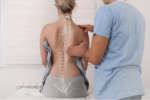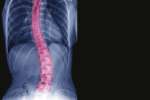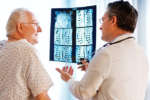Your spine is one of your body’s most important bone structures. The thirty-three individual vertebrae bones in combination with muscles, tendons, ligaments, and nerves allow your body to sit, stand, twist, and bend. It is such a crucial element of your body, and it is important to know what steps to take if you’re experiencing pain, discomfort, or lack of function from ailments like scoliosis. At NewSouth NeuroSpine, we can provide both education and comprehensive spine treatment all at one location.
What Is Scoliosis?
Simply put, scoliosis is when your spine isn’t shaped as it should be. Viewed from behind, the spine should appear straight, and viewed from the side, the spine has a slightly S-shaped curve. With scoliosis, the spine will appear curved viewed from behind, typically in either an S or C shape. The technical diagnosis of the condition is when there is at least a 10 degree difference in angulation at the point of the greatest curve in the spine. Some people can have a mild form of scoliosis and not feel any negative symptoms, while others can have a more severe form of it that leads to pain, numbness, and a compression of nerves. Scoliosis is typically diagnosed during adolescence, but can also occur later in life as the body experiences some natural degeneration of the joints.
How Is Scoliosis Treated?
If diagnosed early when the spine is still growing, it can often be fixed by wearing a brace. Once diagnosed, the condition should be monitored frequently to determine if the curve is lessening and improving. Our team at NewSouth NeuroSpine approaches the condition with spinal intervention, physical therapy, and physical medicine to maximize non-surgical care. If surgery is required, our surgeons will ensure that it is done with minimally invasive techniques. Since our Spine Center offers full, comprehensive care, we will take care of physical therapy if needed as well, making sure to care for you from diagnosis to when you are feeling better.






